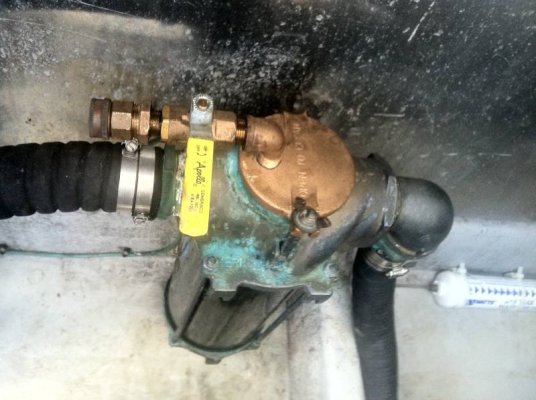ksandin
Member
Hi all,
So I came from a walk around style Kencraft with an 225 Optimax outboard that I kept in a slip. After each trip I did a balancing act to put the hose and "ear-muffs" on and run the engine with fresh water. I would do this even if I was going out the next day, its what the previous owner told me he did, and I suppose it gave me a warm and fuzzy feeling regarding salt corrosion.
Moving up to our Roughwater 29 earlier this year and doing basic maintenance on the 80 hp Ford Lehman, including replacing the raw water pump, some hoses and oil coolers has me thinking about this.
I make it a point, when I get to to the boat, to open the seacock valve and then close it again after my trip. I do have room to put a t-valve and hook up the hose.
So I guess the big question is, how many of you do this?? With the exhaust "elbow" on this Lehman as a spot that can corrode from the inside out I'm sure freshwater is better for it, but is this overly cautious in reality. I know the pencil zincs protect the heat exchanger, but wanted some real world thoughts.
Thanks, Keith
So I came from a walk around style Kencraft with an 225 Optimax outboard that I kept in a slip. After each trip I did a balancing act to put the hose and "ear-muffs" on and run the engine with fresh water. I would do this even if I was going out the next day, its what the previous owner told me he did, and I suppose it gave me a warm and fuzzy feeling regarding salt corrosion.
Moving up to our Roughwater 29 earlier this year and doing basic maintenance on the 80 hp Ford Lehman, including replacing the raw water pump, some hoses and oil coolers has me thinking about this.
I make it a point, when I get to to the boat, to open the seacock valve and then close it again after my trip. I do have room to put a t-valve and hook up the hose.
So I guess the big question is, how many of you do this?? With the exhaust "elbow" on this Lehman as a spot that can corrode from the inside out I'm sure freshwater is better for it, but is this overly cautious in reality. I know the pencil zincs protect the heat exchanger, but wanted some real world thoughts.
Thanks, Keith


